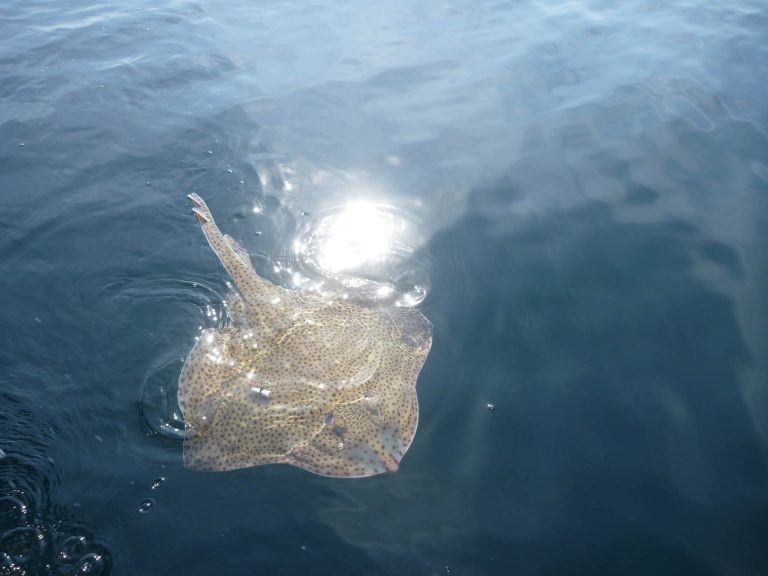UK scientists have shown for the first time through electronic tagging how skate make night-time forays into shallower water.

Researchers at the Marine Biological Association (MBA) studied data from 89 tags on recaptured blonde, thornback, small-eyed and spotted rays, which are among the 16 species of the Raja genus of non-stinging rays that can be described as skate.
They are found in north-east Atlantic and western Mediterranean waters.
Combining the data with existing knowledge of skate ecology, what emerged was previously unknown migratory behaviour in which the skate moved by night across varied seabed topography, foraging for food along the way.
The exact reasons for these journeys remain a mystery, says the MBA, though the study rules out some explanations such as optimising body temperature
“It seems most likely that the movements we observed are foraging trips,” said co-author Samantha Simpson.
“What makes this research significant is that it points to skates travelling to shallower feeding grounds and returning to deeper resting grounds —a behaviour not previously observed in these species.”
Many skate populations are in decline, and the findings could influence future management of these vulnerable species.
“Observing animal behaviour in the sea is challenging, and we know surprisingly little about the fine-scale activities of commercially important species such as skates,” said lead author Nick Humphries.
“Our research suggests that marine protected areas should be large enough to encompass these movements, and that fishing controls should consider the nature and timing of activity that likely makes the skates more susceptible to capture during the night, in either trawls or set nets.”
Divernet – The Biggest Online Resource for Scuba Divers
11-Nov-17

